MANAGEMENT PRACTICES
Determination of Age
The age of a goat judged from its front teeth (incisors) on the lower jaw. There are no teeth on the upper jaw. The kid at birth, or shortly afterwards, has teeth on the lower jaw. These are known as suckling teeth. They are small and sharp in kids. When the kid is 12 to 14 months old the central pair is shed and is replaced by two large permanent teeth; when 24 to 26 months old two more small teeth are shed and are replaced by two large teeth, one on each side of the first pair; when 36 to 38 months old there are six permanent teeth, and when 48 to 50 months old a complete set of four pairs of permanent teeth are present. Occasionally teeth develop much more quickly and the goat may have all its permanent teeth by the time it is three years old. Once all the permanent teeth have developed the degree of wear and tear gives a rough indication of age. The teeth start wearing four to six weeks after eruption. Wearing of teeth depends upon the type of feed and care given to the animals. Some may-mature early and others late. Age of eruption of teeth serves as a reasonable and dependable guide for judging maturity.
Identification
Each goat in a herd should be marked in the same manner by using some identification mark such as tattooing, metal ear-tags or notching of the ears. The tattooing system is used almost universally.
 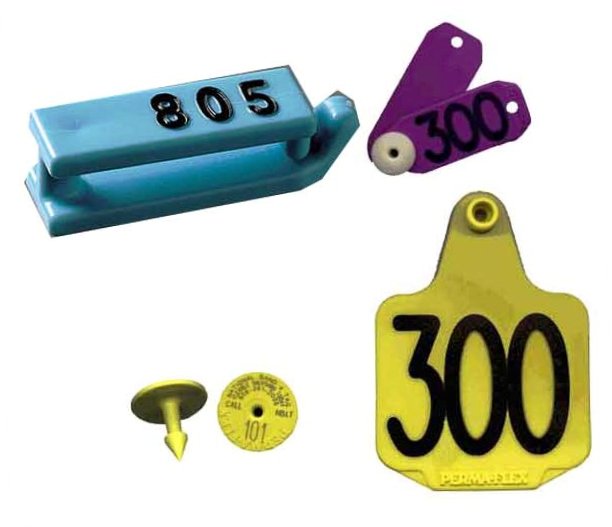
Tagging in goat & Different type of Tags
Disbudding and Dehorning
This should be done when the male kid is two to five days old and the female kid is up to 12 days old. The hair should be clipped from around the horn-bud, and this area covered with petroleum jelly to protect it from caustic soda or potash, which should be thoroughly rubbed on the bud until the horn-bud is well blistered. Caustic soda should not come into contact with the eyes. An electric de homer can also be used safely. 'The kid should be muzzled gently so that it can breathe freely; otherwise partial suffocation may occur. Mature goats can be dehorned by sawing off the horns close to the head with a meat saw. This should be done in winter when flies are not troublesome. The wound should be dressed.
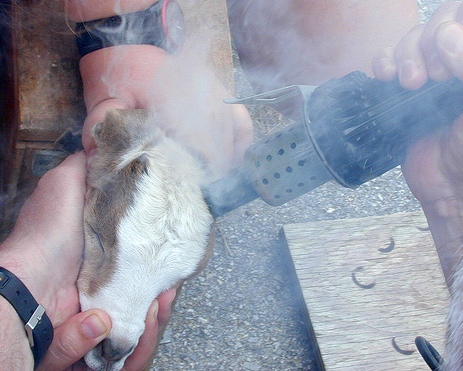
Disbudding
Castration
Male goats are raised mainly for meat and not for breeding. For this reason males are castrated with an emasculator, or torsion forceps. The best time for castrating bucks is when they are six months old with the Burdizzo instrument. This avoids all risks of infection. Castration improves the flesh of the adult buck. A castrated male is' called a wether.
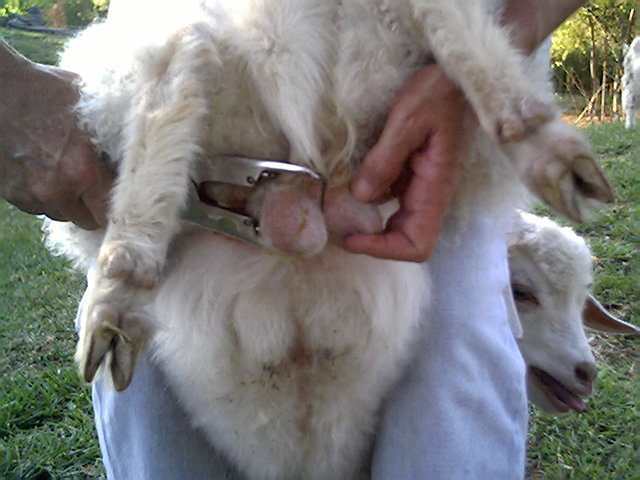
Castration
Exercise
The goats require exercise for maintaining themselves in a good condition. Stock on range receive sufficient exercise while grazing. Stall-fed goats should be let loose in a large paddock for at least three to four hours a day. The bigger the paddock, the better they enjoy. Goats should not be let loose in the paddock or sent out for grazing until the dew has dried up, i.e. not until one to two hours after sunrise. Grazing on wet grass with dew is likely to result in tympanites and intestinal inflammation.
Hoof Trimming
Hoof trimming is necessary for the well-being of goats. If neglected it can weaken legs, ruin feet and lower milk production. The goats soon become used to trimming as a monthly routine. Sharp pen-knives or curved hand-pruning shears can be used effectively.
Selecting the Doe
An outstanding doe is the nucleus of a productive herd. Selection of a doe should be made with great care. Good body development is essential for high milk production. The doe should be well grown, healthy in appearance, and stand squarely on her feet and not down on the pastern. The body should be wedge-shaped and sharp at the withers. The depth of the ribs denotes capacity for consuming large amounts of food. The thighs should provide plenty of room for a round, well attached udder of fair size.
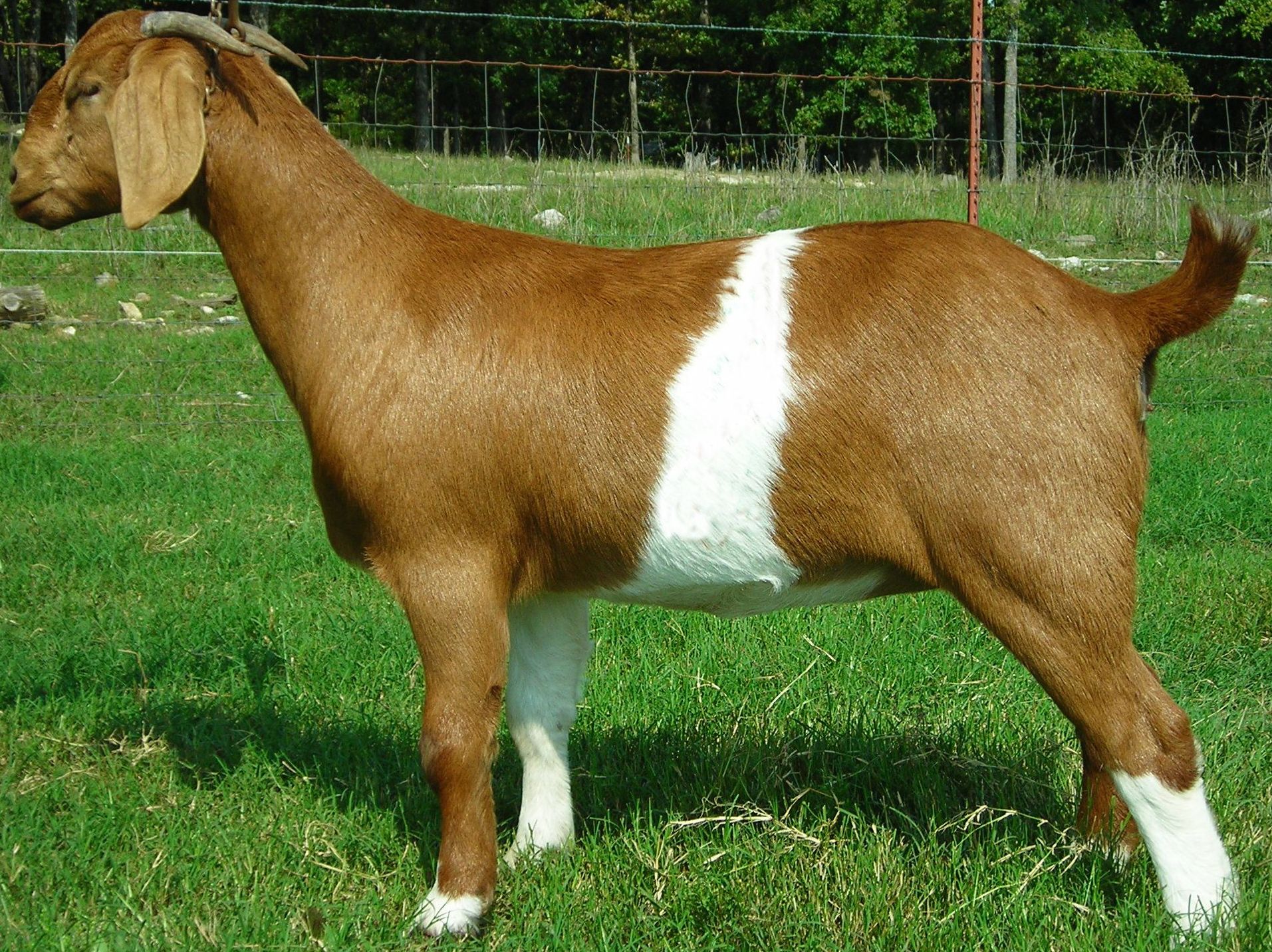
Doe
The skin should be loose, pliable and free from dryness. Poor condition of flesh may be an indication of a good milker, while a poor milker may be in good flesh. The neck should be thin and the head narrow. The eyes should be clear and bright. Does should be truly feminine in appearance and mild in temperament. It is difficult to handle, milk, feed and manage nervous goats. The milk potential cannot be estimated from the size of the udder. The udder of a good milch goat should be soft and pliable rather than meaty. The teats should be pointed slightly forward. The udder in a freshly milked goat should have a collapsed appearance.
Selecting the Buck
The buck should have a strong, well-developed frame, and good conformation and breed characters. Good depth of ribs is essential. Legs should be straight and well placed under the body. The buck should be healthy and free from external and internal parasites. He should be chosen from a good milking strain and should be the progeny of dams having good performance record. Poor condition of flesh is not a serious drawback, since bucks usually worry a good deal, especially during the rutting season. Many herdsmen prefer the bucks to be hornless. A well grown buck kid maybe bred to 'five or six does during his first season at an approximate age of six months. When 18 to 24 months old he may be permitted to service 25 to 30 does, and when fully mature 50 to 60 does in a breeding season.
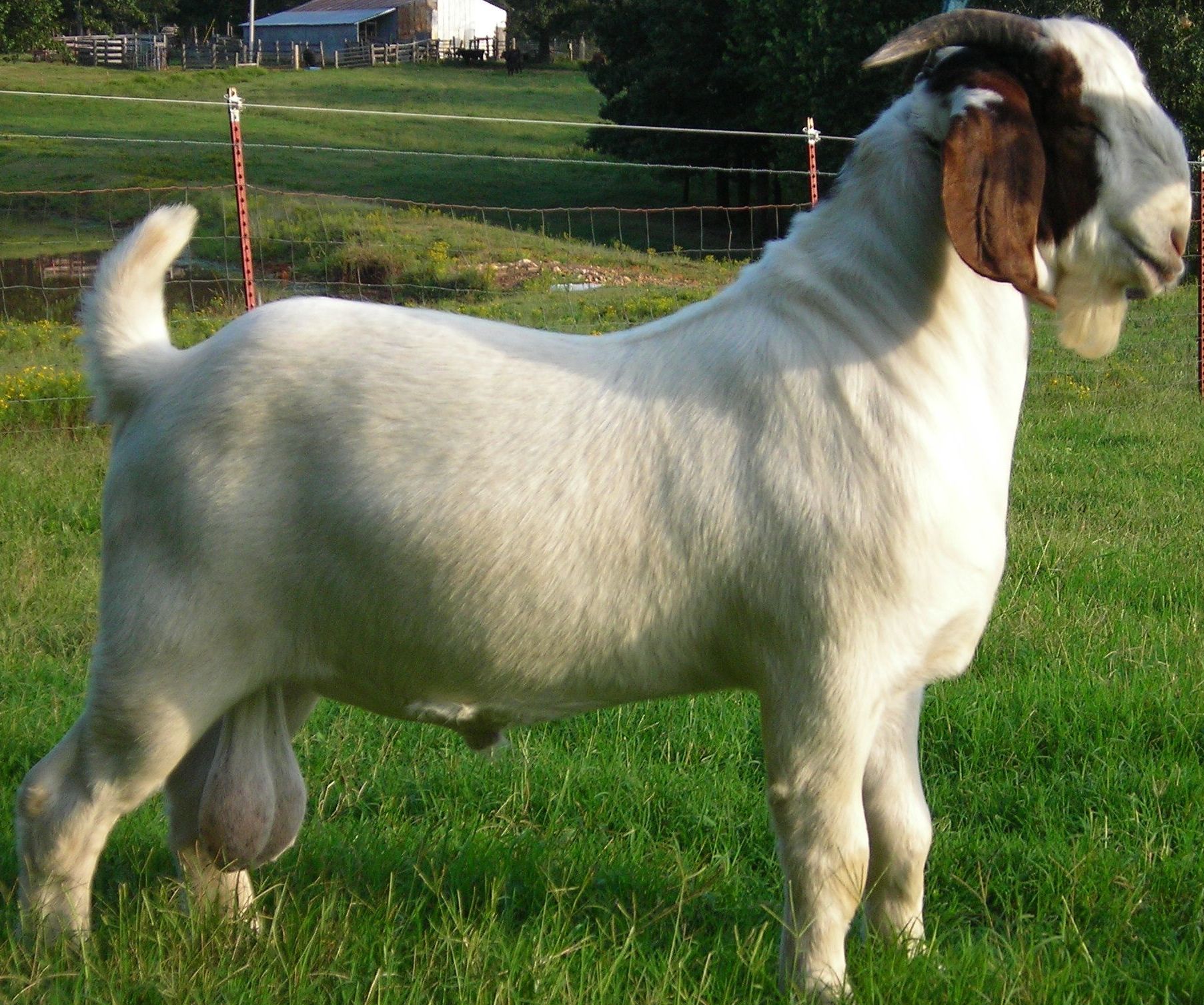
Buck
Mating Season
The does are more or less continuous breeders. The signs of heat in the doe usually are uneasiness, tail shaking, pink and swollen genitalia, frequent urination, restlessness, bleating and a little mucous discharge for one to three days. The period between heats varies from 18 to 21 days. It is better to inseminate the doe on the second day of the heat period. The sperms survive in the female genital tract for 22 to 42 hours. Mating should be so timed that the kids are born in a season when mortality among them is at its lowest and an adequate amount of food is available for their nourishment and growth. Breeding seasons will, therefore, vary with breed, locality and climate.
Mating of the Doe
Does may be mated when 10 to 15 months old so that they kid at the age of 15 to 20 months. But as a rule a goat should not be mated until it is one year old. The average gestation period is 151 ±3 days. It is better to breed the female once a year. Some goats can be made to kid twice in 18 months. The goats reach their maximum efficiency at the age of five to seven years. In exceptional cases they continue to be serviceable even up to 12 years and in rare cases up to 14 years. A well maintained doe may continue to be milked until a month before she is expected to kid again. The condition of the doe during gestation will have a very great influence on the quality of kids at birth. A doe in good condition will produce strong lively kids, whereas a doe in poor condition may produce ungainly kids, weak in constitution. Does must be fed well, allowed liberal exercise and protected from rain and cold.
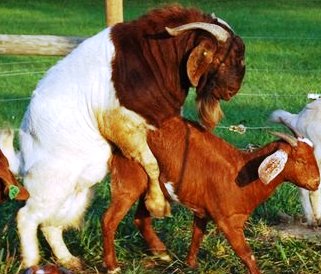
Mating
Goats in Kid
A temporary increase in milk yield after mating is considered to be an indication of pregnancy, but the first sign that a doe is in kid is the cessation of the Periodical return of oestrus. During the first three months of pregnancy there is little alteration in the shape of the in-kid does. The head of the kid can sometimes be felt from six to eight weeks. An old doe or a young doe which is to give birth to one kid may be very misleading in appearance and show no sign of pregnancy. Six to eight weeks before kidding, young does commence to show udder development, but this is by no means a sure sign of pregnancy as they will frequently show such development and even have milk in the udder when they are not in kid.
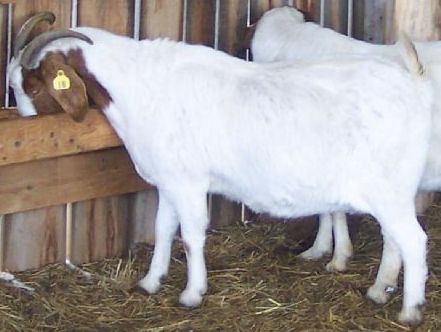
Pregnant Doe
An average goat can rear well two kids. Goats are known to give birth to as many as five kids at a time, but birth of such large numbers affects the health of the goat. The incidence of twinning varies with the breed, environment and number of kidding. The Beetal goats at Hisar Farm produced in a year, on an average, 35 per cent singlet, 54 per cent twins, 6·3 per .cent triplets and 0·4 per cent quadruplets. In Jamunapari the percentage of twinning varies from 19 to 50 with an average of 35, and in Barbari from 47 to 70.
(Source: Dr.Achariya, Handbook of Animal Husbandry). |